Aphids are one of the more common types of pests that you’ll come across as a gardener. If you’re new to gardening or dealing with pests they can be quite a problem to deal with.
That said, with a little bit of know-how you can rid your garden of aphids quickly and without too much trouble.
In this guide, you’ll learn about how to do that and which methods are right for you and your garden.
Let’s get started by taking a quick look at what aphids really are and how they tick.
What are aphids?
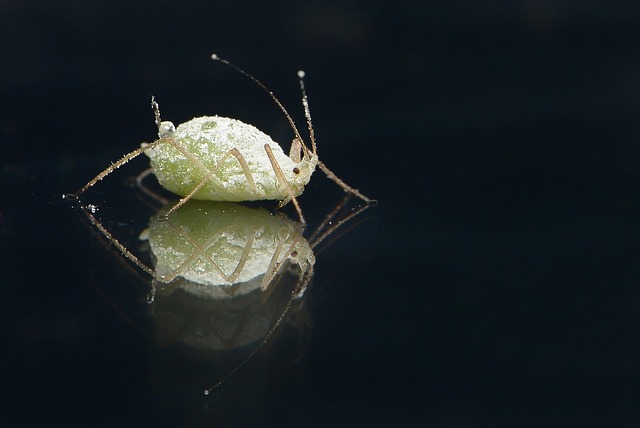
Aphids are small insects approximately 2 millimetres long that can be found in a variety of different colours such as white, black, yellow, green, brown and red.
They survive by feeding on the sap within your plants which they find in leaves, buds, stems and flowers.
One of the reasons they plague so many gardeners is their short reproductive cycle; a single season for your flowers is enough time for aphids to reproduce several times and so their numbers can grow very quickly.
One minute your garden is pest-free, the next it’s overridden with them. When this happens you’ll want to know as soon as possible in order to minimise the damage.
To figure this out it helps to know what aphids look like.
What do aphids look like?

We’ve already mentioned that they are about 2mm in length and that they can be one of several colours (we’re yet to see a rainbow coloured aphid but you never know!), but there are quite a few bugs out there, so how can you tell one from another?
Aphids can be recognised by their pear-like shape when seen from above.
Other than that, most of their features will be too small for you to make out well without a magnifying glass.
We could tell you that they’ve got six legs, two antennae and a sucker they use to suck out your sap, but it might be a bit hard for you to see them.
So, you’re better off studying a few of the photos here to get a better feel for what they look like.
What do aphids eat?
Aphids eat all sorts of plants; some species are monophagous, meaning that they only eat one species of plant.
While others eat a more varied diet.
That said because humans tend to favour a small subset of plants in their gardens, gardeners typically find aphids on flowering plants like roses and hibiscus, as well as herbs and vegetables like basil, kale and pepper plants.
Regardless of what you plant in your garden, you can find your plants under attack from aphids, so it helps to be on guard.
Are there different types of aphids?
There are about 5,000 different species known to man (and probably more that are unknown).
They have evolved in wide ranges of environments, so it’s natural that there be different species.
They differ by appearance, with insects in the aphid family appearing in a wide array of colours.
You also find that different aphid species vary by other dimensions such as size and diet as well.
Do aphids bite?
Aphids do not bite humans. It’s natural to feel a bit icky around bugs like aphids, but you don’t have anything to worry about when it comes to being bitten or stung by aphids.
They feed on plants not with teeth, but with a tiny sucker that can penetrate plant material but not human skin.
Do aphids fly?
Yes, aphids can fly and are sometimes even known as “green-flies” because of this behaviour. While they often crawl around from plant to plant, the females can fly to a new area which helps them to colonise new plants completely (something you’ll want to avoid)
Ants & aphids (ant mutualism)

One interesting thing to learn is that aphids often have allies in the form of ants.
When aphids feed on your plants, they secrete a substance called honeydew, which ants like to feed on.
So, somehow, ants have learned to farm aphids for their own purposes. This is known as ant mutualism and is quite incredible when you think about it.
How to prevent aphids
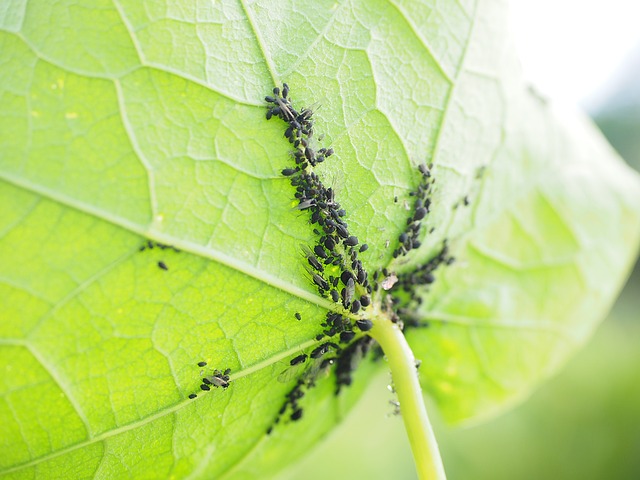
When it comes to dealing with aphids, it’s obviously preferable if you can prevent them from ever taking hold in your garden.
How can you do this?
One way is to populate your garden with the kind of insects that like to eat aphids. That way, anytime that aphids begin to take hold, their numbers will be reduced before they can ever make a dent on your plants.
Some examples of such insects:
- Ladybirds (ladybugs in the USA)
- Lacewings
- Parasitic wasps
Some people go as far as ordering these insects by mail. Whether you want to go to these efforts or not depends on how much of a problem aphids have been in the past.
Symptoms of an aphids infestation
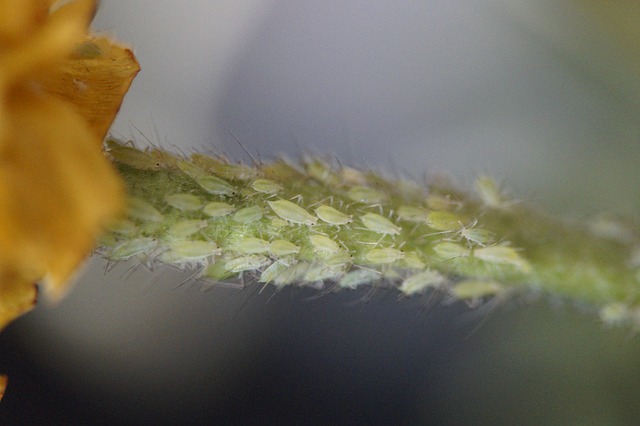
If prevention has failed and aphids have begun to take hold of your plants, there are a few signs that you can notice before things get too out of hand.
The first (unsurprisingly) is signs of lots of little aphids crawling around on your plants. By now you should have a decent idea of what they look like, so you’ll quickly be able to tell whether or not you have an aphid infestation.
Another symptom is the presence of honeydew on your plants. This is the substance that aphids secrete once they have fed on your plants, so its presence suggests that aphids are also present.
A third symptom is what will happen to your plants if aphids get a hold; they’ll weaken and the leaves will become yellow and brown.
Exactly what happens will vary from plant to plant, but when your plants start to look less than 100% healthy, take a closer look at the plant and see if aphids are the cause.
And if they are? Let’s look at how to get rid of them for good.
How to get rid of aphids (for good)
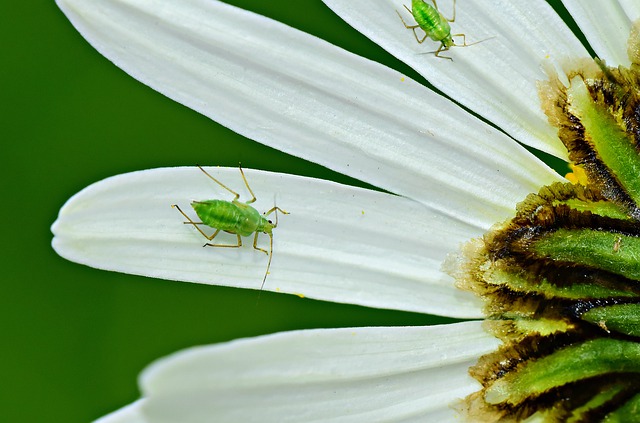
So you’ve done what you could to prevent aphids from taking hold in your garden, but they’re stubborn little creatures and they’ve found a way regardless.
How can you get rid of aphids and keep them away for good?
There are a few different methods, each with their own pros and cons, so let’s take a look at the most common methods.
Hosing off aphids
The first thing you can try with aphids is physical force.
No, I’m not talking about hiring security to remove them from the premises.
I’m talking about water power. Grab your hose and physically wash them off your plants. Sometimes, depending on the severity of your problem, this will be enough to get rid of them for good.
Other times it will not be sufficient and you’ll have to resort to more lethal methods.
Using DIY insecticidal soap
Creating your own insecticidal soap is another way. This works by smothering the aphids until they essentially suffocate.
It sounds a bit rough but no one ever said gardening would be easy.
To create your own aphid killing soap mixture, simply mix dishwashing detergent with some water and then spray your affected plants, making sure to reach the underside of the leaves as this is often where aphids live and feed.
Systemic pesticides
Systemic pesticides are chemicals that are absorbed by plants and then circulate throughout the entire system.
When insects such as aphids start eating these plants, they consume the poison and die. Using systemic pesticides is probably the most effective way to rid yourself of aphids for good, but they can cause some damage to the nearby environment, so it’s something you want to try only as a last resort.
Killing off dormant aphids
Aphids are quite a clever family of insects and can go dormant during certain seasons. If you do not kill these dormant aphids then they’ll return next season with a vengeance.
You can kill off any of these aphids with dormant oil available from your local Bunnings or garden centre.
Using Diatomaceous Earth to kill aphids
A final way to get rid of aphids is to use Diatomaceous Earth. It’s quite effective, but it’s generally best to not use this while your flowers are in bloom as they can also kill off pollinators.
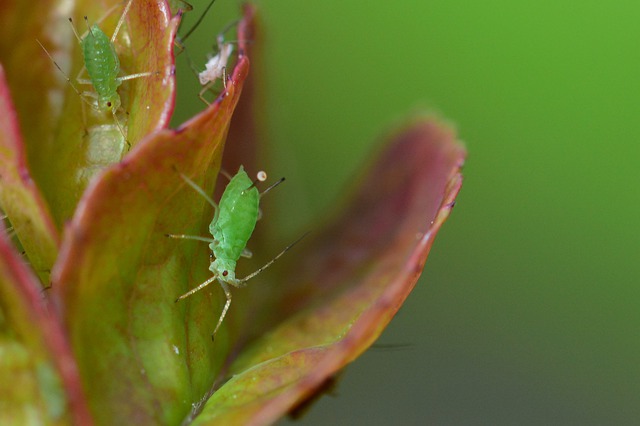
Final Thoughts
Aphids are an annoying pest to have in your garden, but we’ve shown you several ways to get rid of them for good, so there’s nothing to fear.
Have you got an aphid problem that’s hard to deal with?
Do you have another solution that we’ve neglected to mention here?
If so, let us know in the comments below!

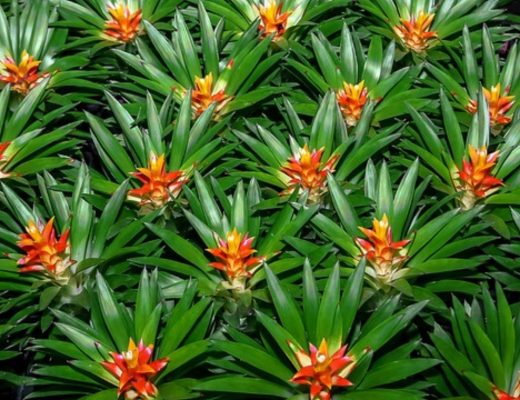


1 Comment
Kurt Jones
April 8, 2022 at 8:37 amGreat content!! So, much informative content you produce high quality of content which is good for those people can possibly visit your site.